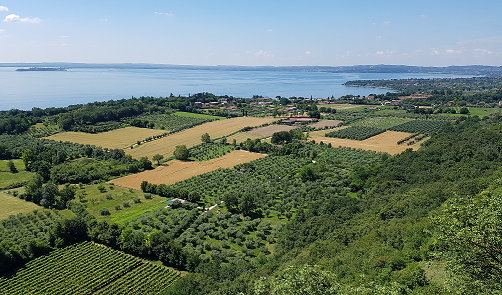 Imagine you’re at the bottom of a tall mountain; what do you know of what can be seen from the top? Now imagine you’re half-way up – you can see the path below you (and could act as a guide for it) but cannot see the summit. If you’re at the summit, you have the perspective to be a guide for anyone coming from the base of the mountain to the top, and can also see the landscape for a considerable distance around. It’s a (somewhat hackneyed) analogy of sorts for a management career, isn’t it?
Imagine you’re at the bottom of a tall mountain; what do you know of what can be seen from the top? Now imagine you’re half-way up – you can see the path below you (and could act as a guide for it) but cannot see the summit. If you’re at the summit, you have the perspective to be a guide for anyone coming from the base of the mountain to the top, and can also see the landscape for a considerable distance around. It’s a (somewhat hackneyed) analogy of sorts for a management career, isn’t it?
Or a simpler example – look at a fixed point with both eyes open. Then close one eye – your perspective shifts, even though the object of your regard stays the same. There are a ton of really interesting optical illusions based on how our perception of reality does not equal reality (perception != reality for those of you hoping for an equation).
Daniel Kahneman, in his book, “Thinking, Fast and Slow” talks about WYSIATI – What You See Is All There Is. We have an overdeveloped belief that what we perceive, through an often (always?) biased viewpoint, is all there is. We are hugely error-prone as a result. Our “System 1”, intuitive thinking takes a lot of shortcuts to arrive at conclusions that are insupportable if viewed more rationally (using System 2 thinking) and with greater inputs from others.
The fact is, we really can’t know everything about anything. And most of what we “know” are things we actually assume to be true – because our primary, effortless System 1 thinking uses all sorts of cheats and heuristics, substitutions and deviations to deliver answers, often avoiding the real question. Paraphrasing many others, the more I read, the more I experience, the more I learn, the less I know. It’s sometimes a little daunting when I think about how much information there is out there that I will never get to in the years I have left, just in the areas that I’m really interested in (it’s also pretty exciting that there is so much to learn). I’ll never be all that interested in the lifecycle of a Patagonian cattle fluke and its defensive behaviours (if such a creature exists) but I could probably devote my life to its study if that interested me.
The upshot of all of this is that in order to be better managers and leaders we need to learn to be truly open (Ray Dalio calls this Radical Open-Mindedness and Radical Transparency). We have to admit that while we can see more of the path, we don’t necessarily know the only way to get to various stages of the mountain or how to get to the next one. We have to be willing to take inputs from people all around us, and then weight those inputs against what we believe. Dalio puts this as making the shift from “I know I’m right .” to “How do I know I’m right?”.
Most of all, we have to display humility to do this. And it’s important to remember that asking questions isn’t a sign of weakness – it’s a sign of strength, and acknowledgement that we all have so much to learn.
|
|

